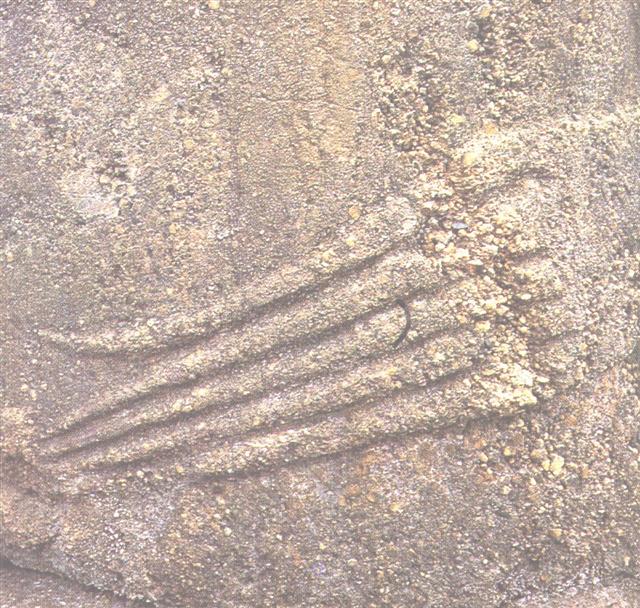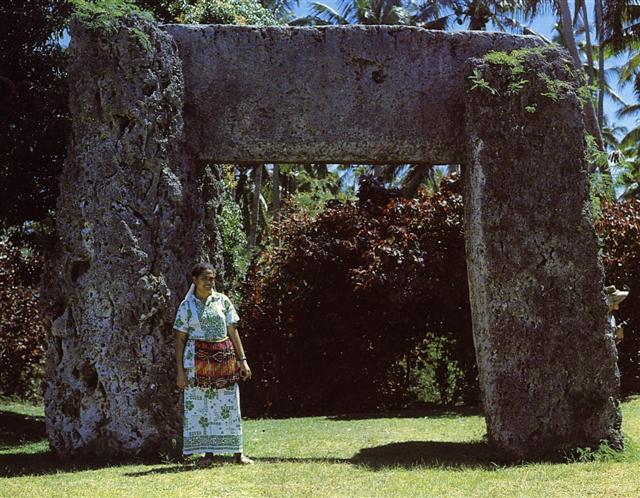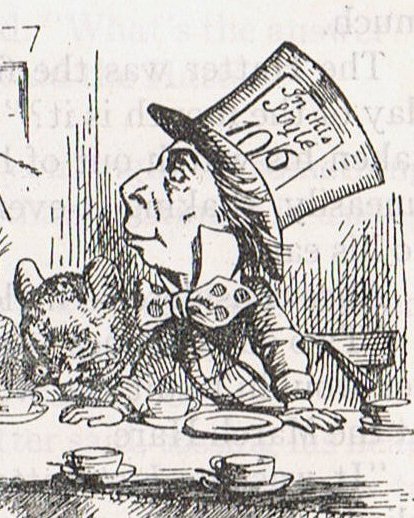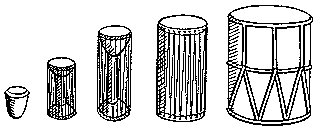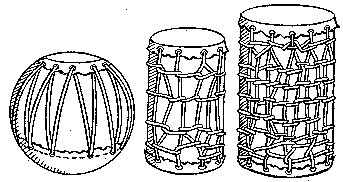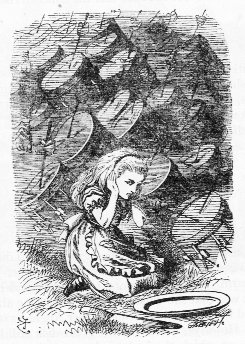64. Once again. According to Ogotemmêli the Dogon peoples - who claimed they had emigrated from the ancient land of Egypt - had earlier counted not on base 10 but on the 8 base: 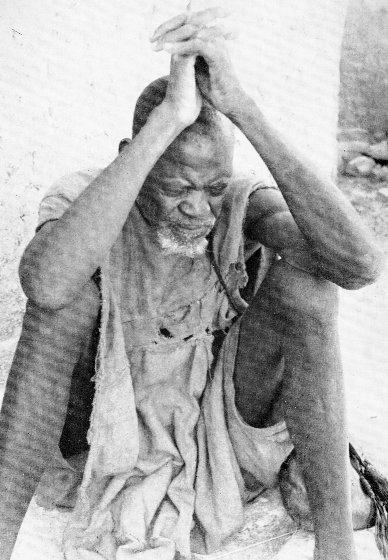
... Ogotemmêli had his own ideas about calculation. The Dogon in fact did use the decimal system, because from the beginning they had counted on their fingers, but the basis of their reckoning had been the number eight and this number recurred in what they called in French la centaine, which for them meant eighty. Eighty was the limit of reckoning, after which a new series began. Nowadays there could be ten such series, so that the European 1,000 corresponded to the Dogon 800. But Ogotemmêli believed that in the beginning men counted by eights - the number of cowries on each hand, that they had used their ten fingers to arrive at eighty, but that the number eight appeared again in order to produce 640 (8 x 10 x 8). 'Six hundred and forty', he said, 'is the end of the reckoning.' ... Thus their counting, which nowadays went on all the 10 fingers could anciently have been on 8 fingers only. I guess the reason was that the thumbs were of a separate kind.
This discussion should connect (↔) with the first glyph on side a of the G tablet, because I have reconstructed the text at the end on side b to a place corresponding to *63, i.e. with 'a hole' added at *64 (MARCH 21). ... When I asked if I could bring one of the archaeologists along on the promised visit to his cave, Atan Atan was at first reluctant, but on second thought he found that this could do no harm since the cave was now mine and would be emptied anyhow. The objects, however, were to be taken directly on board the ship and not shown to anyone before we left the island. Whatever was said and done afterwards would not matter to him, he added. The stone skull with the peculiar pits on top brought to mind a small and crude stone cranium already found archaeologically behind the Vinapu temple plaza on the south side of the island, and a second examination of this piece showed much to our surprise that here also two deep pits had been carved on the forehead, asymmetrically on each side of the sagittalis ... Ferdon ... who conducted personal interrogations among the Easter Islanders in his own work team at Orongo, and who was to participate in the opening of Atan Atan's cave, wrote: 'I later learned from quite a different source that such depressions were for placing ground human bone to create maximum power for this key, or guardian stone.' Obviously, this was not an idea originating with Atan Atan and his cave. On March 18, the day preceding the nocturnal cave visit, I attended an Easter Island wedding in Hangaroa village. During the outdoor feast that followed I was approached by old Victoria Atan, Tahutahu, who grabbed my hand with both of hers and clung on to me, asking me with a friendly but most intense look to bring 'good luck' for herself and her family. It was not then quite clear what she meant, but next day it became evident as two of her nephews performed a rather ludicrous and bizarre rite made up for the occasion in the mess tent of our camp. Atan Atan and his brother Esteban had asked if they could come to us for a Norwegian meal for 'good luck'. They explained that later that night we were to eat from their own umu takapu, or ceremonial earth oven, which their aunt Tahutahu was to prepare in the neighborhood of the cave. Esteban Atan was brought along, said Atan, to make up an even number since I had asked to bring along my companion, Ferdon. An uneven number caused 'bad luck'. When I next asked for the participation even of the expedition photographer ... Atan Atan once more felt ill at ease, until again he made our number even: instead of sending away his brother he insisted that his brother's best friend, Henrique Teao, be brought with us also. The senior brother, Pedro Atan, was ill with influenza, but Henrique Teao was just then bringing along logs to our camp to serve as skids, as the group that had formerly erected the statue were now to reveal how these stone giants were transported. Henrique, who later drowned at sea with his friend Esteban Atan when they tried to escape from the island, had just then started to bring me secret sculptures, and it is not unlikely that the two Atan brothers were aware of the fact. Our Easter Island maid was relieved for the occasion by the ship's steward as our select little group sat down to a Scandinavian smörgaasbord and whispered about our secrets. The three islanders first made the sign of the cross and murmured a little grace, whereupon Atan Atan looked up and explained as if almost embarrassed, that this was otra cosa parte, 'something apart' from what was to follow. From then on all conversation continued in a hoarse whisper, and a special phrase composed in Rapanui by Atan Atan was to be repeatedly whispered by each of us as if to convince ourselves, if not the invisible aku-aku, that we were all related 'Long-ears' eating of a Norwegian curanto. As night fell, Atan Atan became visibly grave and solemn. When the six of us climbed into the expedition jeep to cross the island, beads of perspiration appeared on his face, and he repeatedly had to wipe them away although Ferdon and I, observing his emotions closely, agreed that the night air was anything but warm. By way of camouflage we filled the back of the jeep with bundles of washing to be delivered at the Vaitea sheep ranch, and further on near Hangaroa village we stole away from the jeep on foot. We left Henrique behind as a guard while we climbed a wall to cross a stony field that took us towards the part of the scattered village area where Esteban Atan lived. Atan Atan was now almost hysterical. He was terrified that someone might stumble and hurt himself and stated repeatedly that this would mean 'bad luck' for the enterprise. Frequently he reiterated that he was convinced we should have 'good luck' because he had always been kind to others so that his aku-aku was satisfied and no one had yet hurt himself on his land. Nevertheless he was visibly worried about the photographer, who was not a young man. He grabbed his arm and almost dragged him along. The photographer hung awkwardly onto Atan's shoulder as they both struggled to keep their balance across the boulder-strewn fields ... Counting from Mars at March 14 (73, 3-14 → Π) in AD 2024 to April 14 (104) in the same year gives the result 31 days (in our current Gregorian calendar):
But the corresponding right ascension glyph distance, from Deneb Algiedi (Gb2-10, 36 = 265 - 229) to Gb2-33 (59), is only 16 + 7 = 23 days. Thus, here (in AD 2024) the planet Mars had evidently not stayed put but 'had walked away'.
The difference 31 - 23 = 8 could be imagined as alluding to the 8 dark nights before Venus would return as Morning Star.
... 'Each drum had a sound of its own, and so each family had its own language, which is the reason why there are different languages today. The first two families, settled in the south, spoke two dialects of Toro, not very different from each other; the third family spoke Mendéli; the fourth spoke Sanga; the fifth another form of Toro; the sixth Bamba; and the seventh Iréli. Lastly the eighth family was given a language which is understood in all parts of the cliff. Just as the eighth drum dominates all the others, so the eighth language is understood everywhere. It was thus that men were given the third Word, final, complete and multiform to suit the new age. It was closely associated, like the first and second Words, and even more than they, with material objects.'
... The manner of his death can be reconstructed from a variety of legends, folk-customs and other religious survivals. At mid-summer, at the end of a half-year reign, Hercules is made drunk with mead and led into the middle of a circle of twelve stones arranged around an oak, in front of which stands an altar-stone; the oak has been lopped until it is T-shaped. He is bound to it with willow thongs in the 'five-fold bond' which joins wrists, neck, and ankles together, beaten by his comrades till he faints, then flayed, blinded, castrated, impaled with a mistletoe stake, and finally hacked into joints on the altar-stone. His blood is caught in a basin and used for sprinkling the whole tribe to make them vigorous and fruitful. The joints are roasted at twin fires of oak-loppings, kindled with sacred fire preserved from a lightning-blasted oak or made by twirling an alder- or cornel-wood fire-drill in an oak log. The trunk is then uprooted and split into faggots which are added to the flames. The twelve merry-men rush in a wild figure-of-eight dance around the fires, singing ecstatically and tearing at the flesh with their teeth. The bloody remains are burnt in the fire, all except the genitals and the head. These are put into an alder-wood boat and floated down the river to an islet; though the head is sometimes cured with smoke and preserved for oracular use. His tanist succeeds him and reigns for the remainder of the year, when he is sacrificially killed by a new Hercules ...
|
||||||||||||||||||||||||||||||||||||||||||||||||||||||||||||||||||||||||||||||||||||||||||||||||||||||||||||||||||||||||||||||||||||||||||||||||||||||||||||||||||||||||||||||||||||
